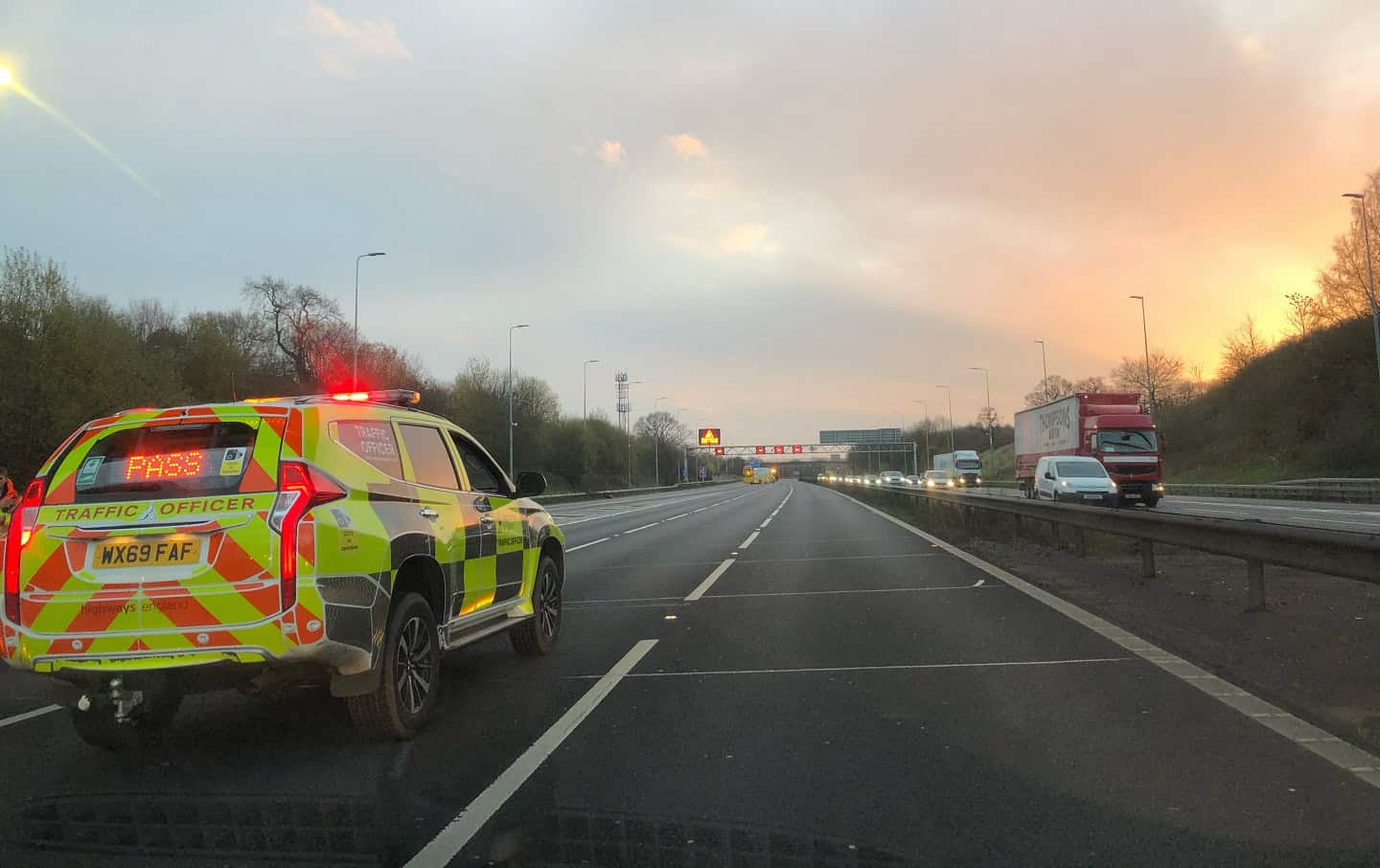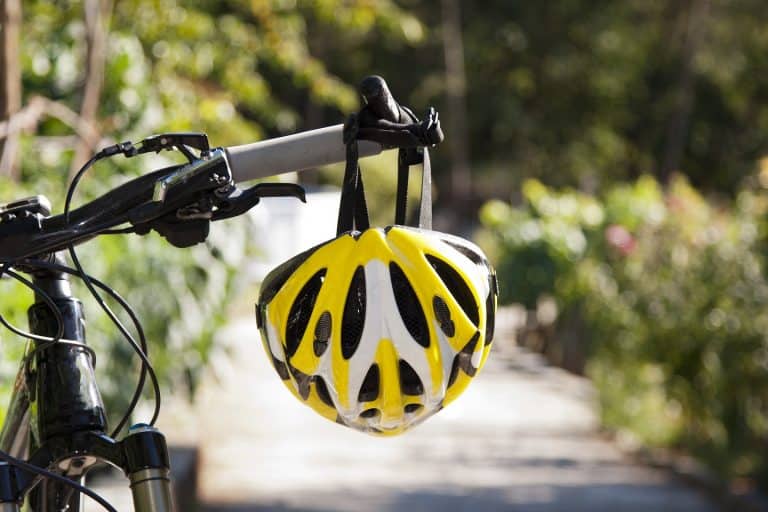
Roads Policing Review: Views from Cyclists, Drivers and Lawyers
Stagnant Road Safety for Over a Decade
According to the Department for Transport 2018 annual report there were on average 5 fatalities and 68 serious injuries every day on Britain’s roads. What is surprising is this figure has remained relatively constant for the last 11 years. As road users, all of us should be worried by this. Fatalities and serious injuries have devastating consequences for victims and their families. We should all be asking why and what can be done to improve road safety.
Department for Transport Call for Evidence
From July to October 2020 the Department for Transport ran a consultation calling for evidence on how to improve policing of roads to reduce the number of people killed or seriously injured. Recommendations from the consultation were due to be delivered in Spring 2021, but have not yet been released. Whilst we wait it is interesting to look at responses from different viewpoints.
There was a Cyclist, a Driver and a Lawyer…
Below is a summary of responses from three organisations who represent different groups.
- Cycling UK – Established in 1878 and has 72,000 members and supporters, whose charitable mission is to make cycling a safe, accessible, enjoyable and ‘normal’ activity for people of all ages and abilities. Their full response can be found here.
- RAC Foundation – Is a transport policy and research organisation which explores the economic, mobility, safety and environmental issues relating to roads and their users. The Foundation promotes informed debate and advocates policy in the interest of the responsible motorist. Their full response can be found here.
- Association of Personal Injury Lawyers (APIL) – A not-for-profit campaign organisation, comprised of 2,800 member lawyers, dedicated to protecting and enhancing access to justice, improving the services provided for victims of personal injury, and campaigning to change the law wherever appropriate. Their full response can be found here.
Responses to the Call for Evidence
The Department for Transport call for evidence was made up of 14 questions probing why road safety in respect of fatalities and serious injuries have not changed since 2010 and how roads policing may improve safety.
Below is a summary of each organisation’s response. Not every question was answered by each organisation.
Question 1 – Why do you think road casualties have remained fairly constant since 2010?
a) Cycling UK
Disproportionate cuts to road policing are likely to be a significant factor. Traffic officers in England and Wales outside the Met Police area fell by 48% between 2007/8 and 2016/7, whilst total police numbers over this period fell by only 17%. The lack of progress on casualty reduction seems to have disproportionately affected cyclist safety. The European Transport Safety Council has shown fear of being caught influences driver behaviour far more than the severity of punishments.
b) RAC Foundation
It may be that we’ve managed to secure the (relatively) easy wins by fixing individual parts of the system, but to move further, we need to take a much more integrated approach. For example considering drivers’ social environment and norms, business practices and the physical environment.
There are two important implications for roads policing. First, the biggest influence on compliances of the credible risk of being caught. Second, the police have a key role to play in joining with other agencies to share information, identify highest risk offenders and develop effective intervention strategies.
c) APIL
Roads policing is not a police priority. Resourcing for enforcement has significantly reduced over the last decade. Individuals’ awareness of lack of enforcement allows people to take advantage of being able to ignore road traffic law, such as us mobile phones, failing to wear seatbelts, adhere to speed limits and driving under the influence of alcohol or drugs.
There has been a lack of funding for infrastructure.
Due to technological advancements there are more distractions now compared to ten years ago when enforcement was cut.
Education on road safety has significantly reduced.
Question 2 – What does the evidence suggest has the most impact on reducing deaths on the road?
a) Cycling UK
As far as we can tell, there is virtually no literature which systematically compares effectiveness of the range of available road safety measures.
b) RAC Foundation
Answered with questions 3, see below.
c) APIL
Not answered.
Question 3 – What evidence led initiatives demonstrate what could be done to help reduce road traffic casualties?
a) Cycling UK
This paper contains a useful listing of analyses of road safety interventions. Cycling UK’s response to the Cycling and Walking consultation and our overview briefings on road safety and on road traffic law and enforcement cite extensive research.
b) RAC Foundation
Sustained adequate enforcement by police and other agencies is key. Enforcement of the recognised ‘fatal five’ (failure to wear seatbelts; speeding; drink/drug driving; careless driving; using mobile phone) rightly falls to the police.
Impactful measures involve adequate on road enforcement; further improving safety performance of vehicles; and a fresh look at what more can be done to encourage safer driving. Finally, accelerate the path to more highly automated driving.
c) APIL
Where cutbacks to funding impact on enforcement of roads policing there is little to no improvement in safety and when (enforcements increases casualties) are reduced due to increased compliance of road traffic laws.
The UK lacks an overarching organisation and coordinated approach to deal with roads policing and learn from traffic collisions and casualties. The proposition to introduce the ‘Highways Accident Investigation Branch’ would follow models seen in other modes of transport such as the Rail Accident Investigation Branch. Alternatively, a cross sector injury prevention strategy should be introduced to create an overarching organisation for all accidents which have caused injury.
Question 4 – Can you provide examples or empirical evidence demonstrating a relationship between road traffic law enforcement and compliance with road traffic law?
a) Cycling UK
A European Transport Safety Council (ETSC) report found drivers are more willing to comply with rules if they feel they are likely to be caught and punished.
b) RAC Foundation
Answered with question 5, see below.
c) APIL
Not answered.
Question 5 – Can you provide any examples or empirical evidence identifying a causal relationship between enforcement and road collision casualty numbers?
a) Cycling UK
An ETSC report concluded ‘improvements in traffic law enforcement should be part of an integrated road safety policy and have been shown to lead to rapid reductions in deaths and injuries when applying best practice’.
b) RAC Foundation
TRL 2015: The Effectiveness of Roads Policing, Technical Research for Thames Valley Police and Hampshire Constabulary:
Effectiveness of average speed cameras in Great Britain
c) APIL
Not answered.
Question 6 – Can you provide any evidence or examples that road traffic enforcement can disrupt or detect other (non-motoring) criminality?
a) Cycling UK
Police Scotland report.
b) RAC Foundation
Not answered.
c) APIL
Not answered.
Question 7 – What else alongside enforcement (such as education or examples of use of technology and signage) has been evidenced to increase compliance?
a) Cycling UK
Education and enforcement is a tried and tested strategy for tackling drink driving, and an EU wide study has recognised this combination as an example of best practice.
An excellent example of education and enforcement is West Midlands Police’s widely praised Operation Close Pass, which sought to tackle drivers leaving too little space when overtaking cyclists. After a year there had been a 20% reduction in serious cyclist injuries compared with the preceding year.
Education and enforcement campaigns should be run in conjunction with one another.
b) RAC Foundation
It is extremely hard to pinpoint what action has resulted in what outcome, indeed, we would counsel against it. Instead we would point to the way policing needs to work in combination with actors across the whole system – see the report Professor Neville Stanton wrote for the Foundation in 2019.
c) APIL
Education from a young age and re-education throughout individuals’ lives is crucial in maintaining road safety. In particular due to introduction of new technology and vehicles (e.g. e-scooters) continual re-education is critical in ensuring knowledge is up-to-date and roads are as safe as possible.
Education must move with the time. Previously, road safety advertisements were on television and were a successful way of educating individuals on a particular safety campaign. Over the last decade television habits have changed. The use of social media, especially Twitter and Instagram, could be a modern and forward thinking way of education.
Question 8 – How have improvements in design and technology of vehicles (such as collision avoidance systems) impacted upon road safety?
a) Cycling UK
In terms of cycling, the most important recent development in vehicle technology has been the development of ‘direct vision’ lorry cabs.
b) RAC Foundation
The International Vehicle Standards team in the Department for Transport is probably better placed to answer this than anyone else, having been closely involved in the design of improved vehicle standards over time.
c) APIL
Not answered.
Question 9 – In respect of commercial vehicles can you provide any evidence or examples that current levels of enforcement by police and/or DVSA (Driver and Vehicle Standards Agency) and the sanctions that follow are an effective deterrent to encourage compliance?
a) Cycling UK
We suggest the evidence available points to the opposite conclusion. For example a Department for Transport survey showed mobile phone usage was 1% in car drivers, but for van drivers it was 2.1%. Lorry drivers is lower at 0.6%.
b) RAC Foundation
Answered with question 10, see below.
c) APIL
Not answered.
Question 10 – If not, can you provide any evidence or examples of how enforcement or sanctions could be changed to achieve improved compliance?
a) Cycling UK
The regulation of commercial vehicles falls between several bodies (police, HSE (Health & Safety Executive), DVSA, Traffic Commissioners). It seems there are frequent failures of information sharing between the bodies. Cycling UK has highlighted two cases (Drummonds and Fry’s Logistics) where lorry operators have been allowed to function for months after fatal collisions, because Traffic Commissioners were not alerted in time
b) RAC Foundation
The scale of non-compliance that DVSA is continuing to pick up through current levels of activity suggests to us that the sanctions available to them are inadequate and that this is a bigger issue than the absolute level of enforcement activity. The Department’s own data reveals a shockingly high level of infringement.
Work related road injury incidents should be brought within the RIDDOR (Reporting of Injuries, Diseases and Dangerous Occurrences Regulations) framework.
c) APIL
Not answered.
Question 11 – Can you provide evidence or examples of where enforcement of road traffic law can benefit congestion management and air quality?
a) Cycling UK
Cycling UK is one of many organisations that has long called for Part 6 of the Traffic Management Act 2004 to be brought into effect, allowing highway authorities outside London to enforce moving traffic offences. We strongly welcome the Government’s recent (but long overdue) decision to do so, as this will enable them (for instance) to enforce ‘school streets’ schemes as well as yellow box junction offences. We urge that this is now implemented as soon as possible.
b) RAC Foundation
Not answered.
c) APIL
New measures to improve safety of vulnerable road users by reducing the number of motor vehicles on our roads, will in turn help meet decarbonisation targets.
Question 12 – Is there evidence to show how prosecutions contribute to road safety?
a) Cycling UK
We know of no evidence of the impact of prosecutions. However we strongly suspect that road safety is badly undermined the unduly lenient sentences which are routinely handed down to those who have committed offences which result in death or serious injury, but which are dismissed by prosecutors or the courts as being merely “careless” driving.
b) RAC Foundation
Not answered.
c) APIL
Not answered.
Question 13 – Can you provide evidence or examples (in particular the use of technology) of what could be done to better enable and equip those charged with enforcing traffic laws?
a) Cycling UK
The single most important action required to strengthen the hand of roads policing officers is to boost the priority and resourcing of this vital area of policing, by including it within the Strategic Policing Requirement (SPR).
The current SPR issued in 2015, focuses on terrorism, organised crime, cybercrime, public disorder, etc. It does not mention roads policing, despite large numbers of deaths and serious injuries. This compares unfavourably to Scotland where road safety, tackling road crime and road user education have all been regularly identified as priorities in Scotland’s Annual Police Plans.
b) RAC Foundation
The police need to be equipped with genuinely portable, court admissible roadside testing equipment to detect drug and alcohol impairment and to have the facility for arresting those found to be over the prescribed limits.
The more administrative activity can be lifted from officers and handled by civilian staff the better.
While Police and Crime Commissioners will set local priorities we see value in there being greater national consistency, for example in the targeting of activity, and in the linking of road traffic offences with wider criminality.
c) APIL
Not answered.
Question 14 – Can you provide evidence of existing approaches to enforcement or available technologies that could inform the future shape of road traffic enforcement by police and other agencies?
a) Cycling UK
Cycling UK supports the increased use of safety cameras (whether area-based speed cameras, traffic light cameras, ANPR etc) to support the enforcement of road traffic law, though we believe these should complement rather than substitute for ‘human’ roads policing.
The technology we most wish to highlight is the use of a properly-resourced online portal for cyclists and other road users to upload video evidence of road crimes. The best practice model here is ‘Operation Snap’, an online reporting portal and common system for reporting incidents of bad driving and submitting video evidence.
b) RAC Foundation
We are concerned about the risk of an over reliance on automated technology (see this report).
It is important to guard against unfounded public concern about rationale for deployment of speed cameras, by publishing data on performance of each camera site.
It is also important to recognise that a large proportion of collisions occur on rural roads where, whilst inappropriate speed might be one contributory factor, it may well be inappropriate but within the legal maximum, on a road where fixed or average speed cameras would not detect or deter the other factors, such as position on the carriageway, loss of control or failure to anticipate other road users. Technology can deliver a great deal, but technology has its limits.
Modern motor vehicles and devices carried within them generate a great deal of information about the vehicle and its use, be that from cameras fitted specifically to record each trip, through to mobile telephones and on to the in-vehicle telematics. That data should be made readily available to investigating officers who, by turn, need the relevant skills to access and interpret the data – this may be a reason why a dedicated collision investigation service may be appropriate in order to develop the right skill base most efficiently.
c) APIL
Not answered.
Further comments
a) Cycling UK
We recommend setting up of a road collision investigations body with a remit purely to recommend measures for preventing future collisions, thereby freeing up the police to focus on criminal investigations.
We recommend the College of Policing’s ‘Investigating Road Deaths’ guidance should be extended to cover serious injury cases.
We recommend the police should be required to refer serious injury collisions to the CPS for a charging decision, not just those that result in a fatality. This arises out of our concern that no further action is taken in a significant number of non-fatal incidents.
Victim support services for road crash victims should be better resourced. Victims should be fully informed about the conduct of their cases, including decisions about charging, who has taken these decisions and on what grounds.
Data should be made available on the prosecutions, convictions and sentences for road traffic offences involving different road user groups, both as the accused party and as the victim, to improve transparency on how the system of road traffic law is operating. These should be provided through the Ministry of Justice’s ‘Data First’ programme.
b) RAC Foundation
No further comments.
c) APIL
The introduction of micromobility vehicles such as e-scooters may present additional safety concerns. An effect of COVID-19 pandemic maybe to increase use of e-scooters and cycling, which may increase collisions.
Education and re-education for is all road users is crucial in ensuring road safety. This includes ensuring drivers are more aware of safe passing distances and educating cyclists of the benefits of obtaining public liability insurance.
It should be compulsory for all new commercial vehicles to be equipped with reversing cameras.
The further widespread introduction of Smart Motorways also presents a significant safety concern.
We are concerned about the deployment of Automated Vehicle Technology and the future use of partially automated and driverless cars.










